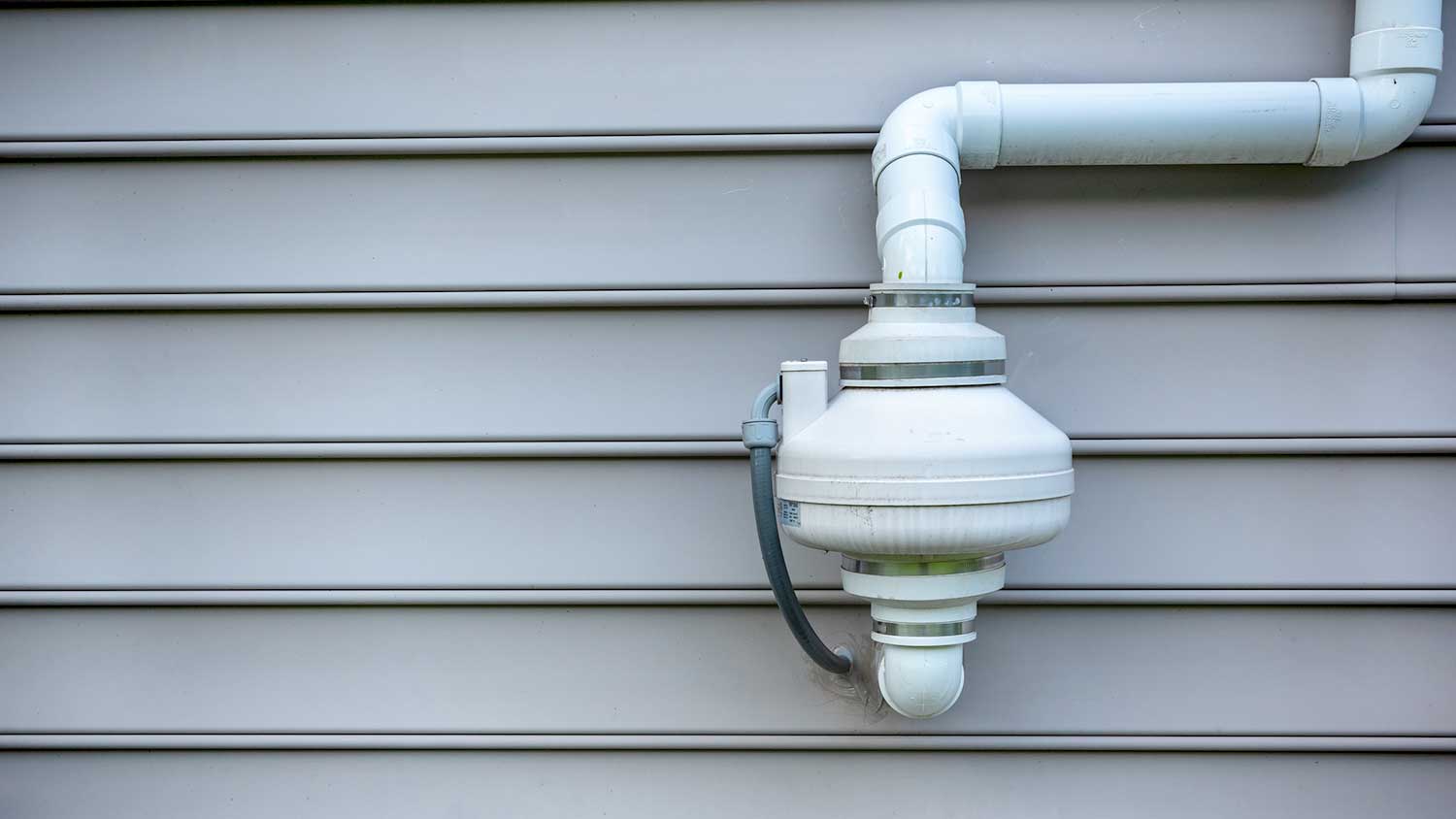
Get clear answers on how much radon remediation costs, including average prices, key cost factors, and tips to save money on your home’s radon mitigation.
Radon—you can't see it or smell it, but you can get rid of it


After smoking, radon is the second leading cause of lung cancer in the U.S.
Air purifiers are not an effective way to eliminate radon.
Radon mitigation requires specialized equipment and should be handled by a certified and licensed radon remediation pro near you.
A radon professional can provide ongoing testing after remediation to ensure radon levels remain low.
You've done a radon test and the results came back above the recommended limit of 4 picocuries per liter. Radon exposure is the second leading cause of lung cancer in the U.S. (after smoking), so it's nothing you want hanging around your home. Fortunately, you can take steps to reduce radon levels and your exposure. Here's how to get rid of radon in your home.
Radon gas forms when radioactive materials, such as uranium, break down deep in the ground. The gas travels up through the layers of the earth, traveling through rocks and soil to the surface.
If there happens to be a home built on top of the soil, radon can enter the structure through cracks or other openings in the foundation. While many people assume that radon is only found in houses with basements, the gas can enter the ground level of homes without basements, too. Radon can also enter homes through well water.

You can't smell, see or taste radon gas. The only way to determine if you have elevated radon levels in your home is with a test.
Two types of tests exist. The first is a device you can purchase at a hardware store or from your state's radon office. You follow the instructions on the device, setting it up in your home (usually in the basement). Over a period, it collects air samples and readings. Once the testing is finished, you send the device to a lab for analysis.
The other way to test for radon is to hire a local, certified radon testing company. The company will set up a device in your home, which will measure radon levels in the air, often overnight. The testing company will then let you know the results, often within a day or so.
Professional testing is more expensive than using a device from a hardware store. However, the results are faster and you can trust the company's expertise. If you get a high reading from an at-home test, it's always a good idea to hire a certified professional to verify the results and recommend mitigation methods.
If at least two radon tests have confirmed levels over 4 picocuries per liter, then radon mitigation is a must. If your test results revealed levels between 2 and 4 picocuries per liter, it's also worth considering radon removal.
Getting rid of radon isn't a DIY project. You will need to hire a certified and licensed professional mitigator to remove the radon.
Several mitigation methods exist. A common method is soil depressurization, which uses fans and pipes to pull the gas from underneath your home and toward the outside. Installing a soil depressurization system doesn't require you to make significant changes to your house.
Sealing any cracks and openings in your foundation can support the work of the depressurization system and keep radon from entering your home.
A professional radon mitigation company can recommend the best method to use based on your home's specifications.
The cost of a radon mitigation system depends on the type of method used, the type of foundation your home has, and the size of your house. The average cost is about $1,000.
Once you've had the mitigation system installed, you need to confirm that it's working. Repeat radon testing after a few months to verify that levels have dropped. From there, have testing performed every year or two.
If your home's radon levels were less than 4 picocuries per liter, but above zero, sealing cracks in the walls, foundation and floors can give you peace of mind. Improving your home's ventilation by using fans and opening windows can also help to keep your home's radon levels low.
A professional needs to install a radon mitigation system for you, if that's the right option for your home. However, you can most likely take on the task of sealing cracks or improving the ventilation indoors yourself. Remember that ventilation and sealing aren't substitutes for a properly installed mitigation system when your home's radon levels are above 4 picocuries per liter.
From average costs to expert advice, get all the answers you need to get your job done.

Get clear answers on how much radon remediation costs, including average prices, key cost factors, and tips to save money on your home’s radon mitigation.

Discover the average indoor air quality testing cost, what impacts pricing, and how to budget for healthier air in your home.

Find out what impacts radon testing costs, including average prices for DIY kits and professional services, so you can protect your home and budget confidently.

How long does a radon mitigation system last? A properly installed and maintained system can last 20 years or more, but various issues can reduce the life span.

Knowing how to test for radon will keep your home free and safe from this odorless gas—you just have to decide whether to do it yourself or hire a pro.

What is radon testing? Radon testing measures the presence and concentration of radon gas within indoor environments. Read on to learn more.